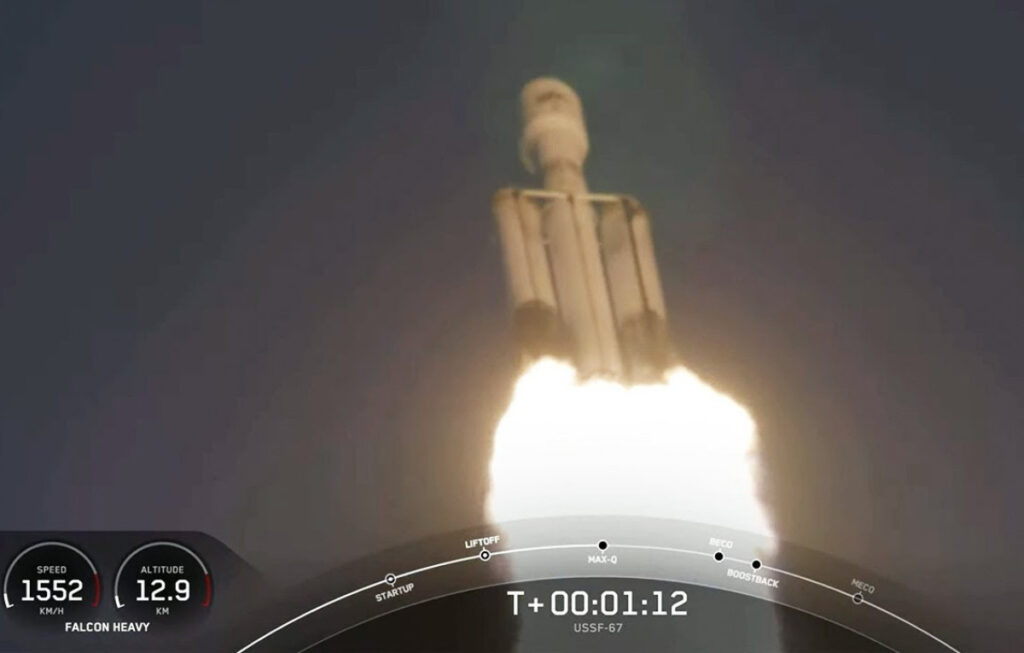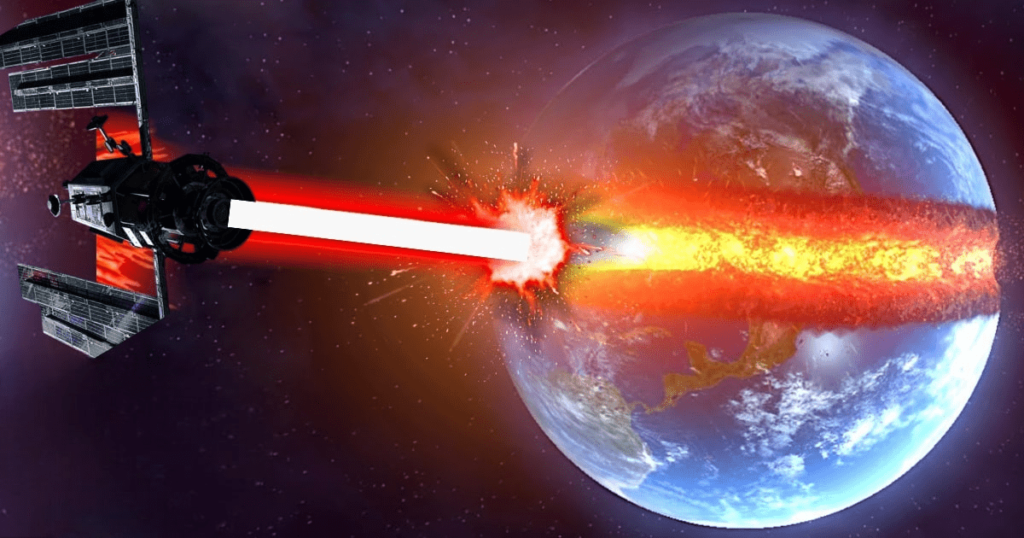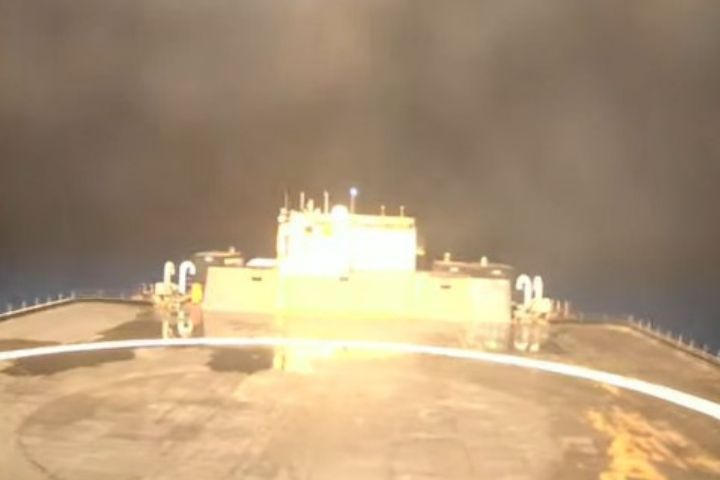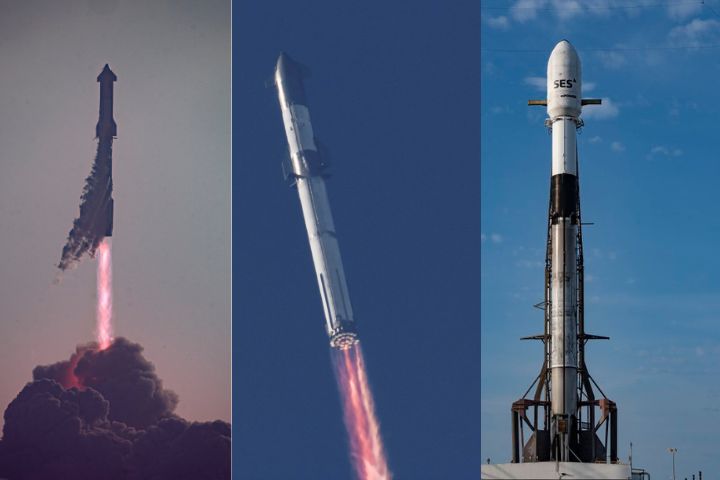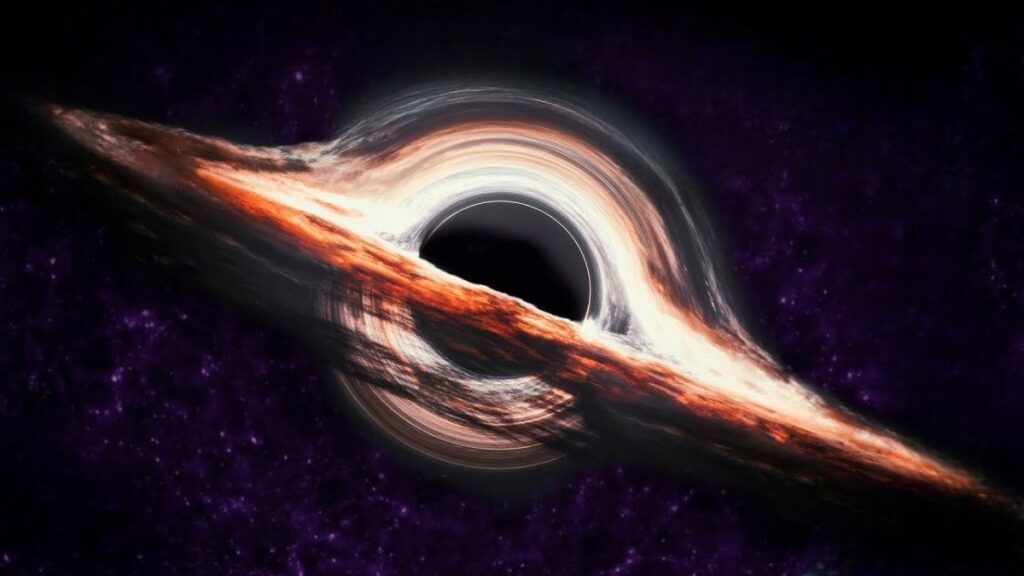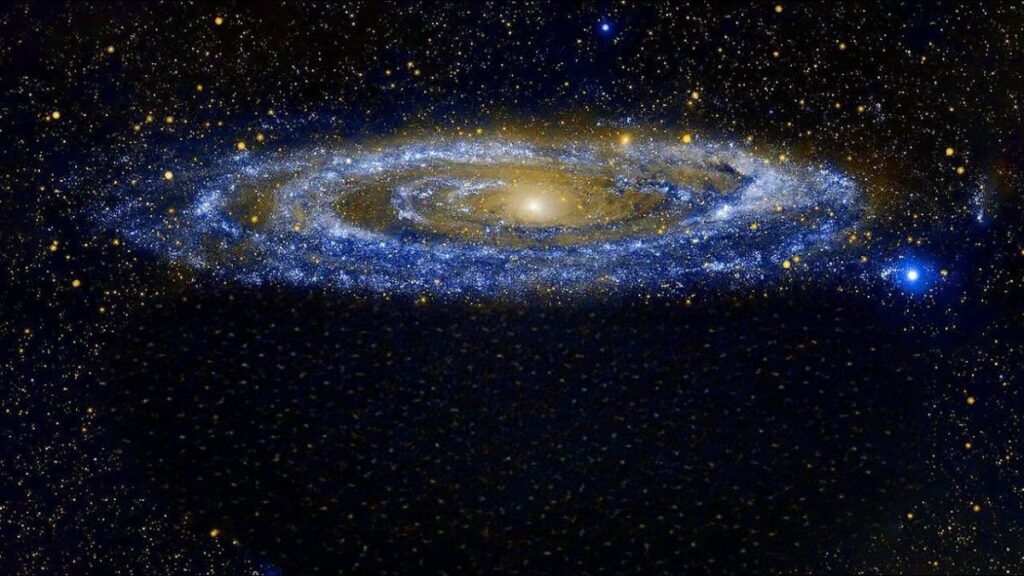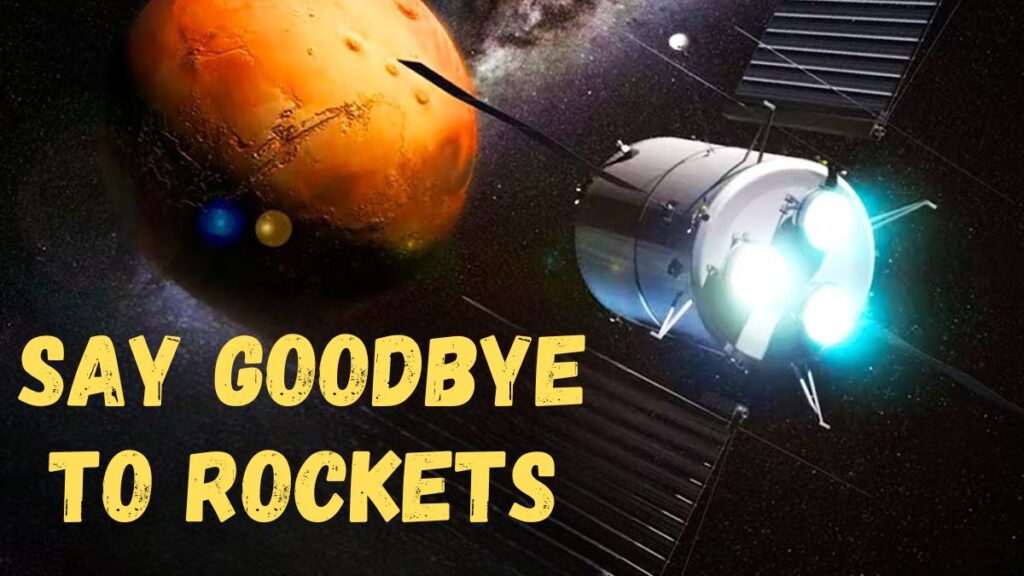
In many science fiction stories, in the future humanity has spread out across the solar system, colonizing planets and asteroids.
Given the hundreds of millions of km between us and even the closest orbital bodies, this is not easy to do in real life – at least not with our current level of technology.
NASA predicts that it will take 7 months to make it to even our closest neighbor, Mars.
This is why sci-fi writers often invent powerful engines on their spacecrafts – warp drives, Epstein drives and hyperdrives – that allow humans to cross those distances in days or minutes, rather than months or years.
These conventional flight times occur because of the limitations in conventional rocketry.
But new technology is arising, something that feels like it’s straight out of sci-fi, that might one day completely replace conventional rockets.
With its greater efficiency, those month-long flight times could become mere days.
And while the technology is still under development, there are examples of it being used in outer space missions right now.
What is this technology?
Ion engines.
And with them, the future might be a lot closer than you think.
To begin with, for those who are unfamiliar, what is an ion engine?
And how are they different from the conventional rockets we know today?
All rocketry works under the principle of conservation of momentum.
If you want to go up, you must send something else flying down, with enough momentum to equal the upward momentum you wish to achieve.
Conventional chemical rockets do this by burning rocket fuel.
Oxidiser mixes with a chemical like liquid methane, heating it and causing it to expand.
By sending out this stream of highly energised exhaust from the bottom of the rocket, the top is sent flying upwards; kind of like releasing the air from inside a balloon to send it whizzing around the room.
Momentum is conserved in these cases.
In our example with the balloon, the momentum of the air leaving the balloon equals the momentum of the balloon flying around.
With the rocket, the momentum of the exhaust equals the force of the rocket going upwards.
In theory, you could travel around in space by simply having a very large balloon and releasing its air.
However, you would run into a problem with this method.
You would run out of air very quickly, and then would not be able to produce any more thrust.
Balloons are not very efficient forms of rocket propulsion.
To a degree, this is also the problem with our current chemical rockets.
Although burning the fuel does give it more kinetic energy than simply squeezing it out of a balloon, chemical rockets are still not that efficient, as there is an upper limit to how fast you can accelerate exhaust material by burning fuel.
Rather than burning it hotter, if you want to go faster with such a rocket, the only solution is to burn more fuel, which means you need to carry more fuel, which means your rocket has to be bigger and heavier, requiring even more fuel.
And once you run out of said fuel, that is it – you can produce no more thrust.
Conserving their fuel is the reason the NASA trip to Mars will take 7 months.
There’s no way they could have a large enough rocket that could carry enough fuel to accelerate passengers all the way to Mars.
Consider the over 60m size of some of the rockets being launched currently, such as the Artemis 1 SLS rocket that got a spacecraft to the Moon recently – a much closer target.
Its main core stage was filled to the brim with 2.8 million litres of fuel.
That fuel was all burned up in just the first 10 minutes after launch.
To carry enough fuel to accelerate all the way to Mars would need a ridiculously large ship, which would need a monstrous amount of thrust simply to get it off the ground.
It’s just not efficient.
Momentum is equal to mass x velocity.
Chemical rockets try to go faster by simply throwing more mass out the back of their thrusters.
But what if instead we increased the velocity at which that mass was thrown?
That would also increase momentum, giving you more thrust.
And this is where ion engines come in.
Ion engines attempt to give thrust electrically to their propellant.
Rather than burning fuel to cause rapid expansion, they attempt to create ions – or charged particles – that then are accelerated along electromagnetic fields – sometimes to speeds of 146,000km/h, depending on the model.
The more electricity you have, the more momentum you could impart to such a particle.
And the faster it leaves the back of your rocket, the more momentum that your rocket gains to move forward.
This means that you could get away with using far less fuel on a trip, provided that you could create enough electrical energy to accelerate your particles.
The takeaway is that ion engines are much more efficient than chemical rockets.
Chemical rocket fuel efficiency could achieve up to 35% efficiency, while ion engines could manage 90%.
Different models vary in their efficiency, but all require far less propellant to achieve acceleration.
So much so, that they can literally accelerate for years.
And this acceleration adds up – NASA space shuttles have top speeds of 29,000km/h.
Ion thrusters can achieve speeds that are 11 times that.
The upper cap is how much electricity you can produce, not how much fuel is in the tank.
So, if ion engines are so superior, why haven’t we already started using them?
That question is a little misleading.
We have been using them.
The recent NASA DART mission was equipped with a NEXT gridded ion thruster, ready to be used in the event that its conventional thrusters failed.
Deep Space 1 visited distant comets while using a NSTAR ion engine.
For a period between 1972 and the late 1990’s, Soviet satellites made use of Hall-effect thrusters, a type of ion propulsion, as stabilisers on their satellites.
This functionality is still being used on satellites today.
SpaceX’s Starlink satellites also use Hall-effect thrusters.
Even entire space stations have been propelled by these thrusters.
The Chinese Tiangong space station is moved by propellant but also 4 Hall-effect thrusters, which are used to adjust and maintain the station’s orbit.
These thrusters have reportedly been firing continuously for 8,240 hours with no problems.
But, as you might have intuited, there is also a problem with current-generation ion thrusters, which means they’re not yet ready to replace all conventional rockets.
They have a fatal flaw, an Achilles’ heel.
Ion-thrusters on the market today have terrible “oomph”.
To illustrate this point, if you were to take an ion thruster, and were to hold out your hand to try to stop it moving, the force you would feel would be roughly comparable to the weight of a single piece of paper.
That is the trade-off.
Ion thrusters can accelerate for years.
They usually use chemically inert gases as their fuel source, so are very safe.
They can accelerate particles up to huge speeds… but the number of particles being accelerated is small, so the force of this thrust is tiny.
An ion engine cannot produce the large-enough thrust needed to get a spacecraft out of Earth’s powerful gravity well by itself.
Of course, in space, with no air resistance to fight against and with enough time, this tiny thrust can add up.
Even a gentle acceleration can get you to where you want to go if nothing opposes it.
For point of reference, some Ion engines in space can take a couple of days to accelerate a spacecraft up to about the speed of a moving car.
This means that ion thrusters have a niche on long-distance missions, ones that can get away with only gentle force to maintain orbits, or for moving very small things like tiny satellites.
But they are a long way away from being able to carry humanity a long way away.
There are other problems to overcome.
Ion engines work by creating circuits – moving patterns of electrons that can carry charge and create electrical and magnetic fields.
However, ions from the atmosphere can interfere with the delicate balance of these circuits.
If the circuit breaks down because extra negative charges are coming in when they shouldn’t, or are bleeding out unexpectedly, the engine loses its ability to create the right fields, which means it can’t accelerate reliably.
Not only that, but the best fuel source for ion engines – the chemically inert xenon – is very rare and expensive at $1000/kg.
Ion engines will need to overcome all of these problems if they are to become the primary form of space transportation in the future.
That said, there are some efforts being made to do just that.
Helicon thrusters are a new type of ion thruster that are being developed by the European Space Agency in collaboration with the Australian National University.
They are making breakthroughs that improve thruster efficiency even further, decreasing the wear on parts and making it so ion thrusters are even better suited to those long space voyages.
In terms of fuel source, some ion thrusters under development are being built in ways that allows them to use a much wider range of fuel sources.
The complexly named Magnetoplasmadynamic thruster has configurations that allow it to use Hydrogen, argon, ammonia or nitrogen as propellant.
In certain settings it can even use the ambient gas in low Earth orbit.
Imagine having a spaceship whose fuel source was literally air, whose only waste exhaust was that same air?
This is a trait shared by the ever-improving VASIMR (Variable Specific Impulse Magnetoplasma Rocket), which is particularly intriguing as it can use almost anything as a fuel source, although it has a preference for argon.
Argon is 200 times cheaper than its competitor, xenon, making it a much more viable fuel source.
VASIMR also has more “oomph” than other ion thrusters.
The designers of VASIMR claim that it could take astronauts to Mars in just 39 days.
However, the technology still has some kinks to work out.
It is extremely power-hungry (It is designed to heat plasma inside it to 1,000,000°C, or 173 times the temperature of the Sun’s surface).
We do not yet have power sources efficient enough to feed this engine at the levels necessary for that 39 day trip; and even when we do, unsurprisingly, getting rid of the excess heat this creates is problematic as in space, there is nothing to transfer the excess heat to.
These up-and-coming lines of ion thrusters all still have a long way to go before they will be able to totally replace conventional rockets.
While their efficiency is incredible, their poor thrust leaves much to be desired.
But even if an ion engine is never developed with the thrust necessary to get out of a planet’s gravity well, this capability to significantly reduce the travel time to distant planets, and its advantages as a way of efficiently moving satellites means that ion thrusters already have their niche.
Scientists keep searching for solutions to ion-thrusters’ technological challenges.
For now, conventional chemical rockets remain the only option for short-burn, high thrust journeys.
But one day, if those challenges are overcome, this may no longer be true.
Ion engines might become the only type of engine worth using.
Then, the solar system as a whole will open up to us like never before.
It might one day be possible to pop over to Mars for a holiday.
Perhaps this is one more example of where science fiction one day becomes science fact.


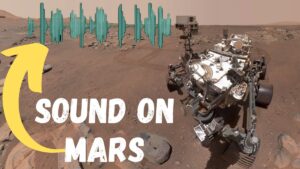
![Moon Jellyfish has [ Hidden Secrets ] You don't know moon jellyfish](https://spaceupper.com/wp-content/uploads/2022/11/1-1-300x169.jpg)


